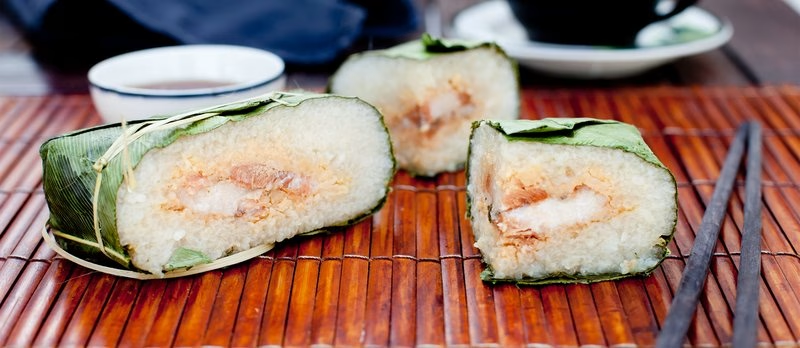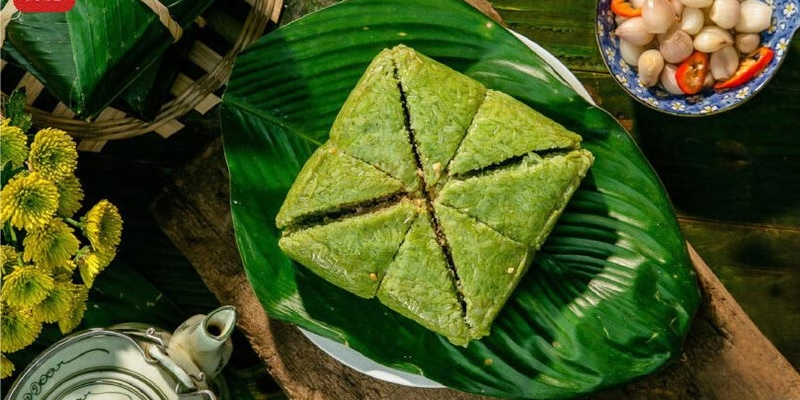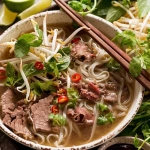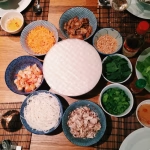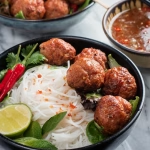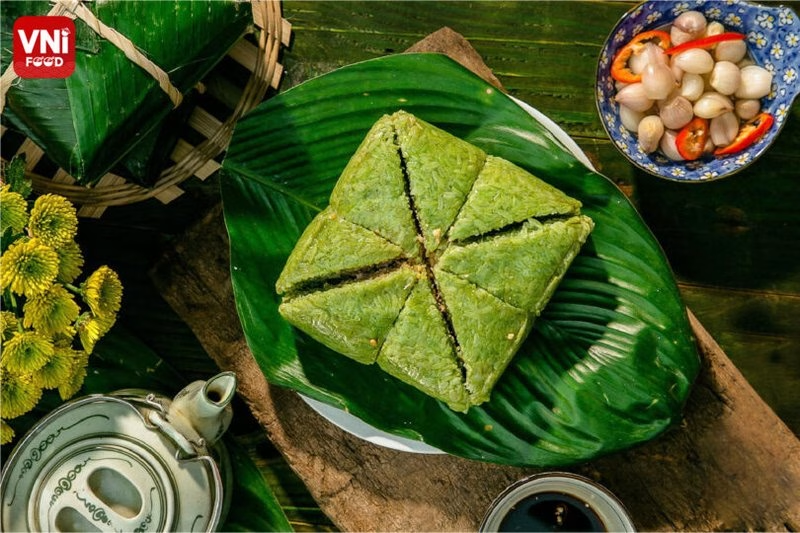
Introduction
Banh Chung is more than just a delicious treat; it’s a symbol of Vietnamese culture and a beloved dish during the Lunar New Year celebrations. This square-shaped rice cake is packed with flavors, featuring glutinous rice, mung beans, and pork, all beautifully wrapped in banana leaves. If you’ve ever been curious about this traditional delicacy, you’re in for a treat! In this article, we’ll dive deep into the *Banh Chung ingredients*, explore various *Banh Chung variations*, and guide you on *how to make Banh Chung at home*.
Originating from the northern regions of Vietnam, Banh Chung is steeped in tradition. Legend has it that this dish was created by the sixth king of the Hùng dynasty to honor his ancestors. The unique flavors of Banh Chung reflect Vietnam’s agricultural heritage, showcasing ingredients that are locally sourced and celebrated. Today, making Banh Chung is a cherished family activity, often involving everyone from grandparents to children, making it a perfect way to bond with loved ones.
Prepare to roll up your sleeves and get cooking! In the following sections, you will find a comprehensive list of ingredients, detailed step-by-step instructions, expert cooking tips, nutritional information, and answers to common questions about Banh Chung.
Ingredients
Creating authentic Banh Chung requires specific ingredients that work in harmony. Here’s what you’ll need:
| Ingredient | Measurement | Description |
|---|---|---|
| Glutinous rice | 500g | Glutinous rice is essential for achieving the sticky texture of Banh Chung. |
| Mung beans | 200g | These beans provide a creamy filling, balancing the dish’s textures. |
| Pork (fatty cut) | 300g | Fatty pork enhances the flavor and moisture, making each bite irresistible. |
| Banana leaves | 10 leaves | Banana leaves add a unique aroma and an authentic touch to the packaging. |
| Salt | 1 tsp | Salt is crucial for seasoning and balancing the taste of Banh Chung. |
| Water | 2 liters | Water is necessary for cooking and steaming the cakes to perfection. |
Whether you’re making *homemade Banh Chung* for the first time or looking for the *best Banh Chung recipe*, having high-quality ingredients is the key to success. Gathering these ingredients will set you on the path to enjoying this delightful dish.
Step-by-Step Instructions
Making Banh Chung may seem daunting, but with careful steps, you’ll find it’s a rewarding process. Here’s how to do it:
-
Step 1: Soak the Rice and Mung Beans
Begin by soaking 500g of glutinous rice and 200g of mung beans in separate bowls filled with water. Soak them for at least 6 hours or overnight. This softens the grains, ensuring they cook evenly and produce a sticky texture. -
Step 2: Prepare the Pork Filling
While the rice and beans soak, chop 300g of fatty pork into small pieces. Marinate it with a teaspoon of salt for flavor. This marinated meat enhances the Banh Chung filling’s taste, giving it that savory punch. -
Step 3: Prepare the Mung Beans
After soaking, drain the mung beans and steam them until soft, around 20-30 minutes. Once cooked, mash them into a paste. Mixing in a pinch of salt can elevate the flavor, adding depth to your Banh Chung. -
Step 4: Assemble the Banh Chung
Cut the banana leaves into large squares. Start with a layer of glutinous rice, then add a layer of mung bean paste, followed by the marinated pork, and top off with another layer of mung beans and rice. Wrap it tightly into a square shape, securing it with kitchen twine to keep everything together. -
Step 5: Cook the Banh Chung
Boil 2 liters of water in a large pot. Once boiling, place the wrapped Banh Chung into the pot and cook for about 4-6 hours. Ensure they are covered with water during cooking to prevent burning and to infuse the flavors. -
Step 6: Let It Cool
After cooking, carefully remove the Banh Chung from the pot and let them cool. You can place them under a heavy object to help them firm up, so they maintain their shape.
You’ll end up with aromatic, stunning Banh Chung that packs a flavorful punch!
Pro Tips
1. **Use Fresh Banana Leaves**: Fresh banana leaves are essential for the best flavor. They impart a unique aroma that dried leaves cannot replicate.
2. **Experiment with Fillings**: While the traditional fillings work great, feel free to get creative! Try adding mushrooms or chestnuts for a vegetarian version.
3. **Don’t Rush the Cooking**: The cooking time is crucial for the perfect texture. Take your time to ensure they are cooked thoroughly.
4. **Make in Bulk**: Banh Chung can be made in large batches and stored for later. They freeze well, so make extras to enjoy throughout the year.
5. **Serve with Soy Sauce**: Enhance the flavor of Banh Chung by serving it with a rich soy sauce or sweet fish sauce for dipping.
Nutritional Information
Here’s a breakdown of the nutritional content for one serving of Banh Chung (approximately 100g):
| Nutrient | Amount |
|---|---|
| Calories | 250 |
| Protein | 10g |
| Carbohydrates | 35g |
| Saturated Fats | 4g |
| Fiber | 2g |
| Cholesterol | 30mg |
| Sugars | 1g |
| Fat | 8g |
Banh Chung is not only tasty but also provides energy and nutrients, making it a great addition to any meal.
FAQs
**What is the best way to store Banh Chung?**
Banh Chung can be stored in the refrigerator for up to a week. Wrap them tightly in plastic wrap or place them in an airtight container to keep them fresh.
**Can Banh Chung be made vegan or gluten-free?**
Yes! You can make a vegan version by substituting the pork with a plant-based protein or vegetables. Just ensure you use gluten-free rice.
**What are the best side dishes to serve with Banh Chung?**
Banh Chung is often served with pickled vegetables, fresh herbs, or even a spicy dipping sauce to balance its savory flavors.
**How long does it take to prepare Banh Chung?**
Preparation can take about 1 hour, but soaking the rice and beans requires additional time—plan for about 6-8 hours in total.
**Can I freeze Banh Chung for later?**
Yes, Banh Chung freezes well! Just make sure they are wrapped tightly. You can steam them again to reheat.
**What’s the history behind Banh Chung?**
Banh Chung is closely tied to the Tet holiday, honoring the Earth and ancestors. It symbolizes balance and nourishment.
**Can I use different meats in Banh Chung?**
Absolutely! Feel free to experiment with different meats like chicken or duck, or even consider seafood for a unique twist.
**Is Banh Chung gluten-free?**
Traditional Banh Chung made with glutinous rice is technically gluten-free, but ensure that no gluten-containing additives are used.
Now that you’ve learned all about Banh Chung, including *how to make it at home*, it’s time to roll up your sleeves and get cooking! This delicious dish is a wonderful way to connect with Vietnamese culture and create lasting memories with friends and family during special occasions.
Tried this Banh Chung recipe? Let us know your experience in the comments! Your feedback will not only help us improve but also inspire others to give this traditional dish a try! Happy cooking!
